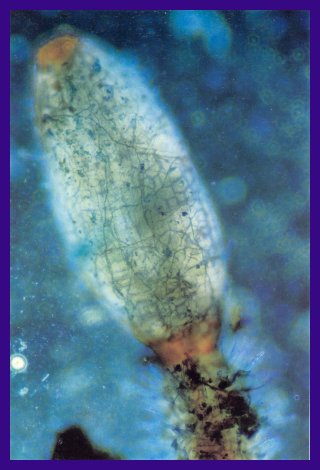

Endomycorrhizae - There are two basic types of mycorrhizae: those in which fungal cells infect the outermost cells of the mycorrhizae and those in which fungal cells infect all the cells of the mycorrhizae internally. Those that have infections primarily in the outermost cells are called ectomycorrhizae, e.g., beech, oak, hemlock, pine, American Chestnut and hickory. Those that have all cells infected internally are called endomycorrhizae, e.g., magnolia, maples, apple, birch, ash, American Elm. As is the case most of the time in natural systems, gradations from one extreme to another usually exist. Those structures that have some characteristics between the two types given are called ectendomycorrhizae, e.g., beech and hemlock. Some endomycorrhizae form vesicles and other types of structures in the non-woody root cells. These mycorrhizae are called vesicular-arbuscular mycorrhizae or V A mycorrhizae. The roots infected by the V A fungi appear similar to normal, non-infected non-woody roots. To see the fungi, sections must be stained and examined under the microscope. More on mycorrhiza. Image at left - Back lighting under a phase microscope shows the network of hyphae within a mycorrhiza. Toluidine blue was added to the sample. Note the root hairs at the base.
Dictionary MAIN
PAGE
Text & Graphics Copyright © 2007
Keslick & Son Modern Arboriculture
Please report web site problems, comments and words of interest,
not found.
Contact